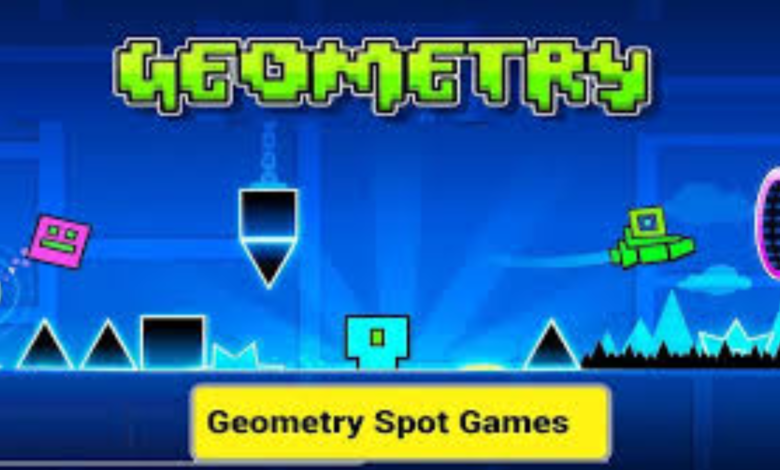Geometry Spot: Everything You Need to Know

Geometry is an ancient yet ever-relevant branch of mathematics that helps us understand shapes, spaces, and the world around us. Whether you’re a student learning geometry for the first time, a teacher seeking engaging content, or a professional applying geometry in your work, Geometry Spot is your go-to resource.
This comprehensive guide will explore the fundamentals, applications, and resources Geometry Spot provides to help learners at all levels excel.
What Is Geometry?
Geometry is a field of mathematics that studies shapes, sizes, angles, and spatial relationships. Derived from the Greek words “geo” (earth) and “metron” (measurement), geometry has been used for thousands of years to measure land, construct buildings, and solve spatial problems.
The Importance of Geometry
- Foundation for STEM: Geometry is integral to science, technology, engineering, and math.
- Practical Applications: It helps in solving real-world problems, from designing buildings to navigating GPS systems.
- Cognitive Development: Learning geometry enhances spatial reasoning and logical thinking.
Why Geometry Spot Stands Out
Geometry Spot is an educational platform dedicated to making geometry accessible and engaging. It provides:
- Step-by-Step Tutorials: Clear explanations of geometric concepts for all levels.
- Interactive Tools: Virtual compasses, protractors, and graphing calculators for hands-on learning.
- Real-World Applications: Case studies that show how geometry is used in various industries.
- Community Support: A forum for learners to ask questions and share insights.
Key Concepts in Geometry
H2: Basic Building Blocks
- Points: The simplest geometric figure with no size or dimension.
- Lines: Straight paths extending infinitely in two directions.
- Angles: Formed by two intersecting lines.
H2: Shapes and Figures
- Triangles: Classified by their angles (acute, obtuse, right) and sides (scalene, isosceles, equilateral).
- Quadrilaterals: Squares, rectangles, parallelograms, and trapezoids.
- Circles: Defined by radius, diameter, and circumference.
H2: Advanced Topics
- Trigonometry: Deals with relationships between angles and sides of triangles.
- Coordinate Geometry: Uses algebra to study geometric figures.
- Transformations: Translation, rotation, reflection, and scaling of shapes.
Applications of Geometry
H3: Geometry in Real Life
- Architecture: Designing skyscrapers, bridges, and homes requires precise geometric calculations.
- Art and Design: Artists use geometric patterns to create symmetry and balance.
- Navigation: Geometry powers GPS systems, enabling accurate location tracking.
H3: Geometry in Technology
- Game Development: Designing 3D environments relies heavily on geometry.
- Robotics: Calculating paths and movements for robots involves spatial geometry.
- Data Visualization: Graphs and charts use geometric principles to present data effectively.
H3: Geometry in Nature
Geometry is evident in the natural world, such as:
- Spirals: Seen in shells and galaxies.
- Symmetry: Found in butterfly wings and leaves.
- Fractals: Observed in snowflakes and tree branches.
Tips to Master Geometry
H2: Build a Strong Foundation
- Familiarize yourself with basic terms like points, lines, and planes.
- Understand the properties of different shapes and their classifications.
H2: Practice Regularly
- Solve practice problems daily to reinforce your understanding.
- Use Geometry Spot’s quizzes and interactive activities.
H2: Use Visualization Techniques
- Draw diagrams to clarify problems.
- Utilize apps and tools for 3D visualization of shapes.
H2: Seek Real-World Examples
- Observe how geometry is applied in architecture, technology, and nature.
- Explore Geometry Spot’s case studies for practical insights.
The Role of Geometry in Education
Geometry plays a vital role in the curriculum from elementary school to advanced studies. Here’s why:
- Enhances Problem-Solving Skills: Geometry encourages logical reasoning and critical thinking.
- Bridges Mathematics and Art: It combines quantitative analysis with creativity.
- Prepares for Advanced Studies: Subjects like physics, engineering, and computer science rely heavily on geometric principles.
Resources Available on Geometry Spot
Geometry Spot offers a wealth of resources to make learning enjoyable and effective:
- Video Tutorials: Step-by-step lessons for visual learners.
- Practice Worksheets: Printable PDFs for offline study.
- Interactive Quizzes: Test your knowledge with instant feedback.
- Geometry Calculator: Solve problems quickly and accurately.
- E-Books: Download comprehensive guides on geometric topics.
The History of Geometry
H3: Ancient Beginnings
- Egyptians and Babylonians: Used geometry for land measurement and construction.
- Greek Contributions: Euclid’s Elements became the foundation of geometry as a formal discipline.
H3: Modern Developments
- Analytic Geometry: Introduced by René Descartes, merging algebra with geometry.
- Non-Euclidean Geometry: Explored by mathematicians like Gauss and Riemann, expanding geometry into curved spaces.
Conclusion
Geometry is a timeless subject that connects us to the world around us. From understanding basic shapes to exploring advanced concepts, it has endless applications in our daily lives and careers. Geometry Spot is your trusted companion on this journey, offering tools, tutorials, and insights to help you succeed.
Whether you’re a beginner or an expert, Geometry Spot is here to make learning fun and meaningful. Start exploring today, and unlock the secrets of shapes and spaces!
FAQs About Geometry Spot
Q1: What makes Geometry Spot unique?
Geometry Spot combines interactive tools, expert tutorials, and real-world examples to make learning geometry easy and engaging.
Q2: Are the resources on Geometry Spot free?
Most of the content, including tutorials and quizzes, is free. Premium features are available for advanced learners.
Q3: Can I use Geometry Spot for school projects?
Yes, Geometry Spot provides diagrams, explanations, and tools perfect for school assignments and projects.
Q4: How does Geometry Spot help professionals?
It offers resources on applied geometry in fields like architecture, engineering, and technology.
Q5: Does Geometry Spot cover advanced topics?
Absolutely! Topics like trigonometry, coordinate geometry, and non-Euclidean geometry are included.
Q6: Can I ask questions on Geometry Spot?
Yes, the community forum allows users to ask and answer questions, creating an interactive learning environment.
Explore Geometry Spot today and transform your understanding of the mathematical universe!



